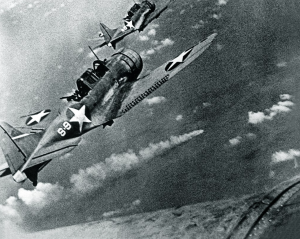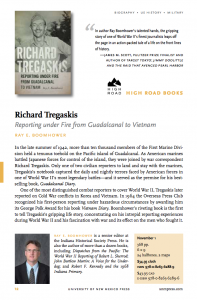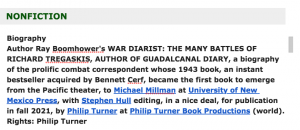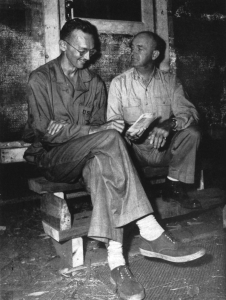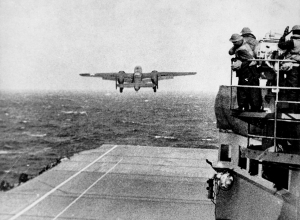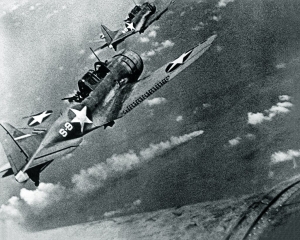Publishing November 15, “Richard Tregaskis: Reporting Under Fire From Guadalcanal To Vietnam”
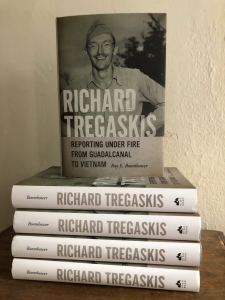 As mentioned on this blog, I’m a lifelong fan of reading biographies, and it’s a delight to work on so many good ones, like Ray E. Boomhower’s new portrait of the life and career of Richard Tregaskis, one of the most accomplished combat correspondents of the twentieth century. Here’s how the catalog copy for University of New Mexico Press’s High Road imprint describes the book:
As mentioned on this blog, I’m a lifelong fan of reading biographies, and it’s a delight to work on so many good ones, like Ray E. Boomhower’s new portrait of the life and career of Richard Tregaskis, one of the most accomplished combat correspondents of the twentieth century. Here’s how the catalog copy for University of New Mexico Press’s High Road imprint describes the book:
In the late summer of 1942, more than ten thousand members of the First Marine Division held a tenuous toehold on the Pacific island of Guadalcanal. As American marines battled Japanese forces for control of the island, they were joined by war correspondent Richard Tregaskis…one of only two civilian reporters to land and stay with the marines, and in his notebook he captured the daily and nightly terrors faced by American forces in one of World War II’s most legendary battles–and it served as the premise for his bestselling book, Guadalcanal Diary.
One of the most distinguished combat reporters to cover World War II, Tregaskis later reported on Cold War conflicts in Korea and Vietnam. In 1964 the Overseas Press Club recognized his first-person reporting under hazardous circumstances by awarding him its George Polk Award for his book Vietnam Diary. Boomhower’s riveting book is the first to tell Tregaskis’s gripping life story, concentrating on his intrepid reporting experiences during World War II and his fascination with war and its effect on the men who fought it.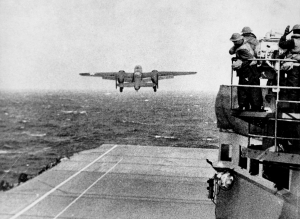
Richard B. Frank, author of Guadalcanal: The Definitive Account of the Landmark Battle, says of the new biography:
“Alongside Ernie Pyle, Tregaskis was perhaps the most outstanding American war correspondent of WWII. [He’s] best know for…Guadalcanal Diary, but that book covered only one small chapter of his reporting from the front lines. Ray Boohmoer’s excellent new biography finally does justice to Tregaskis in this deeply researched, thoughtful portrait of the man and his times.”
The book’s official pub date will be November 15, and I’m getting an early start on congratulating the author, for whom I’ve already sold a second biography of an important journalist to UNMP, The Ultimate Protest: Malcolm W Browne, Vietnam, and the Photo that Stunned the World. Congrats, Ray!

